For 40 years, the cries of unborn children lost to abortion have been heard at the annual March for Life held in Washington, D.C.
At this year’s march on Jan. 25, an estimated 500,000 anti-abortion advocates – the largest crowd in march history – traversed up Constitution Ave. through the snow to the Supreme Court. Protesters held signs and yelled chants in an attempt to raise awareness to the slaughter of babies in the womb. The March for Life Education and Defense Fund boasts that the annual march is the largest human rights demonstration in the world.
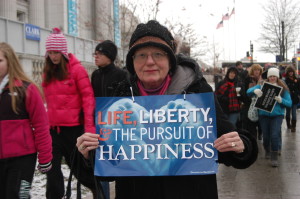
Normally held on Jan. 22 – the actual anniversary of the Supreme Court’s decision in Roe v. Wade, which lifted legal protections for the unborn – this year’s march was moved back three days to accommodate for President Barack Obama’s inauguration. Jan. 25 marks the Feast of the Conversion of St. Paul.
“One of the reasons for going is to hope that we can convert other people, the world actually, to protect the unborn,” said second-time marcher Deacon Lamont Blake from Christ the King, Springfield Gardens. “I think we kind of accomplished that. Yes, it’s been 40 years, but we have to continue to keep that movement going.”
Since the 1973 decision in Roe v. Wade, more than 55 million abortions have been performed in the U.S. That figure surpasses the entire population of England.
“The argument that it’s a woman choice and that it’s not a human being, that really doesn’t cut it with me anymore,” said first-time marcher Victor Torro, a parishioner at Sacred Heart parish, Bayside. “Even science has proven that life begins at conception. We’re literally talking about the killing of innocent children.”
The Diocese of Brooklyn was well represented at the march. More than 800 people from Brooklyn and Queens boarded 16 buses – eight from individual parishes and eight sponsored by the DeSales Media Group, parent company of The Tablet – heading to Washington. The diocese sent more people to the march than any other diocese in the state, and it was the largest pilgrimage ever from the diocese to Washington.
“It was much appreciated,” said Cathy Donohoe, president of Bridge to Life in Flushing who went on the first-ever March for Life and has since been to 15 straight. “We’re a close diocese, and I would like to see every pastor in every parish speak about it.”
While scores of young people were full of energy and excitement, the march is intended to serve as a somber occasion commemorating the lives of those lost to abortion. This year’s march carried additional sadness, since it was the first without its founder Nellie Gray, who passed away last August at the age of 88.
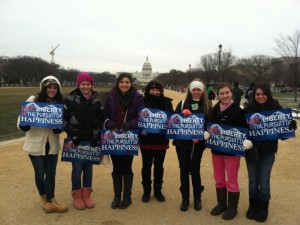
The first-ever March for Life was held on Jan. 22, 1974, the one-year anniversary of Roe v. Wade. About 20,000 people attended that March, but Gray oversaw the exponential growth of the movement.
“She (Gray) was one woman who stood up 39 years ago at the first anniversary of Roe v. Wade,” said Delia Mannix, a parishioner at St. Luke’s in Whitestone who marched for the 10th time this year. “As small as it was to begin with, the power of a woman of faith said that we have to protest and we have to object to it. The impact of one person showed how it’s expanded all over the country and all over the globe.”
After Gray’s passing, Jeanne Monahan, president, and Patrick Kelly, chairman of the board, took over as the march’s new leaders. They led the pre-march rally on the National Mall.
Monahan noted that the 55 million abortions in the past 40 years have wiped out one-sixth of the nation’s would-be population. However, she said that pro-life has become the “new normal” in the country as 50 percent of Americans identified themselves as pro-life in 2012, while a record-low 41 percent identified as pro-choice.
Monahan also stated that the movement is winning among young people. An estimated 80 percent of the participants in the march were under age 30.
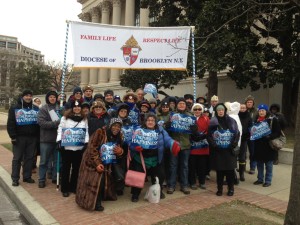
Statement of Self-Survival
“The young people have been born in a time when abortion is legalized,” said second-time marcher Father Darrell DaCosta, pastor at St. Paul the Apostle, Corona. “It’s really a statement of self-survival because the chances are statistically high that they may not have made it out of the womb because of the legalization of abortion.”
The parish youth group from St. Bartholomew’s, Elmhurst, made the trip to Washington to support the cause.
“These kids are constantly told that life is not important, that abortion is completely normal,” said Sister Tatiana Ramirez, P.C.M., director of the youth group. “Yet no one is telling them to stand up for these kids that are being lost to abortion.”
“From conception, it’s already life,” said Kimberly Ortiz, a member of the youth group and a student at Francis Lewis H.S., Fresh Meadows. “It’s important that we continue this march and this representation of the unborn and their rights.”
Other speakers at the rally included Congressman Christopher Smith (R-N.J.) and Cardinal Sean O’Malley, chairman of the U.S. Conference of Catholic Bishops’ Committee on Pro-Life Activities.
Congressman Smith referred to President Obama’s inauguration speech when the latter spoke about caring for the vulnerable and keeping all children safe from harm. That should include the unborn children and their mothers, Rep. Smith said.
Cardinal O’Malley read a tweet from Pope Benedict XVI: “I join all those marching for life from afar, and pray that political leaders will protect the unborn and promote a culture of life.”
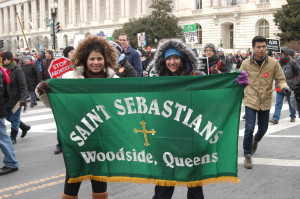
Despite the lack of widespread coverage of the event, many believe the march is still an effective tool to spread the anti-abortion message.
“The problem is that the major media ignores (the march), just like they want to ignore the issue,” said Jim McCloskey, former president of Queens County Respect Life who has marched nearly a dozen times. “For the movement itself, (the march) serves its purpose. In that respect, it’s great that you can produce that many people which can affect the political equation.”
While the March for Life fund reports that abortion numbers have steadily declined since 1990, the organization will continue the march in hopes that lawmakers will not be able to ignore the outpouring of support.
“I believe in life; life is real,” said first-time marcher Doris Buczek, a parishioner at Holy Child Jesus, Richmond Hill. “For these babies that we’ve lost all through the years, they could be living in a beautiful world if things were different.”
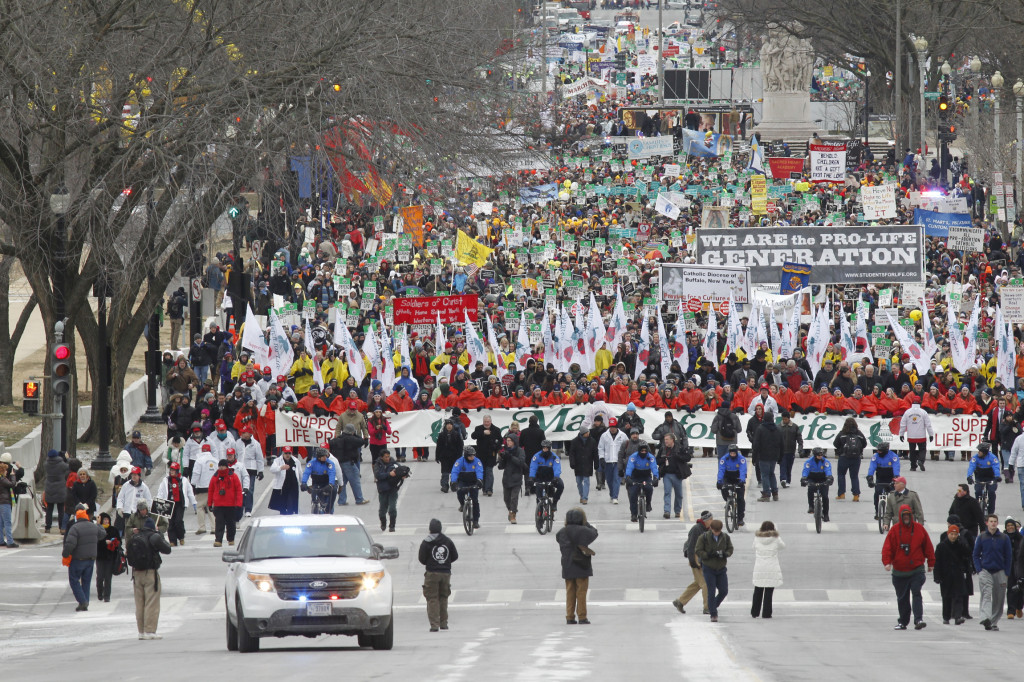

Much thanks to the diocese for providing buses! I was so happy to attend the March for Life and thrilled to see people from all over the United States and even from France! I hope our president changes his mind and realizes what a gift life is and how vulnerable unborn infants are. There is much more help now for women in crisis pregnancies than there was years ago. Crisis pregnancy centers should be supported and valued.